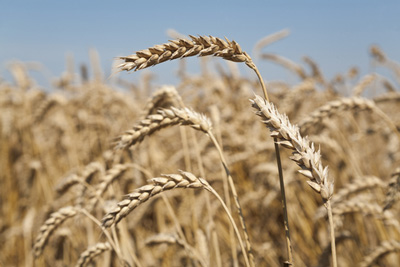New enzymes with the potential to increase wheat yields
- Like
- Digg
- Del
- Tumblr
- VKontakte
- Buffer
- Love This
- Odnoklassniki
- Meneame
- Blogger
- Amazon
- Yahoo Mail
- Gmail
- AOL
- Newsvine
- HackerNews
- Evernote
- MySpace
- Mail.ru
- Viadeo
- Line
- Comments
- Yummly
- SMS
- Viber
- Telegram
- Subscribe
- Skype
- Facebook Messenger
- Kakao
- LiveJournal
- Yammer
- Edgar
- Fintel
- Mix
- Instapaper
- Copy Link
Posted: 29 January 2016 | Victoria White | No comments yet
Researchers have been investigating a naturally occurring plant enzyme known as Rubisco to explore its ability to boost photosynthesis and increase crop yields…


Researchers have reported that wheat yields could be significantly increased thanks to varieties with a superior form of a common enzyme.


Scientists at Lancaster University, Rothamsted Research, and The International Maize and Wheat Improvement Centre (CIMMYT) have been investigating a naturally occurring plant enzyme known as Rubisco to explore its ability to boost photosynthesis and increase crop yields.
The team measured photosynthesis in 25 genotypes of wheat and found variation exists even amongst closely related genotypes. Each type was surveyed to identify superior Rubisco enzymes for improving photosynthesis.
Two of the most efficient were Rubisco from plants known as Aegilops cylindrica (jointed goatgrass) and Hordeum vulgare (barley), which both showed promising Rubisco catalytic properties that should be explored in the context of improving photosynthesis, and ultimately grain yield, in wheat.
New enzymes could increase photosynthesis by 20%
The researchers say the models suggest that incorporating the new enzymes into wheat could increase photosynthesis by up 20% under some field conditions.
Commenting on the research, Professor Martin A. J. Parry, Lancaster Environment Centre (LEC), said: “Improving the efficiency of photosynthesis–the way crops turn carbon dioxide in our atmosphere into everything we can eat–may seem ambitious but for us it offers the best opportunity for producing the scale of change in crop yield that we need to feed a growing global population in a changing world climate.”
Elizabete Carmo-Silva, LEC lecturer in plant sciences for food security, added: “Both jointed grass and barley are regarded as valuable genetic resources for improving wheat disease resistance, our research suggests that they can also be used to improve biomass production.”




